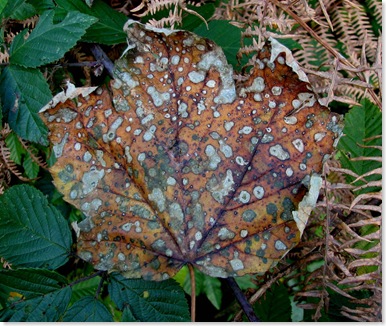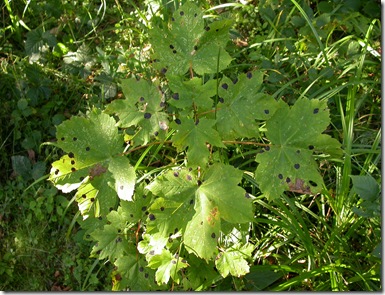The microfungus, a hyphomycete, that causes the spots on the sycamore leaf below is Cristulariella depraedens.
There are plenty of different species of microfungi to be seen in the woods all round the year and, while many are difficult to identify, those on plants can be relatively easy with the help of Microfungi on Land Plants by Ellis & Ellis (Richmond Publishing, 1997).
Many of these rusts, mildews and leaf spots are specific to a particular kind of plant and you can just run through those listed in the book as occurring on leaves (or whatever) and see which fits best. There are some helpful line drawings in the back of the book for those with microscopes, but these days there are often many photographs on the web.
Very often one has the satisfaction of being able to claim a new species record for the Sussex Biodiversity Records Centre - this is the first county record of our friend Cristulariella depraedens, for example, though I have no doubt that it is quite common, but not so common as the tar spot fungus Rhytisma acerinum that disfigures sycamore leaves with black patches almost everywhere outside polluted areas (see below):
The tar spot fungus cannot cope with air pollution.

